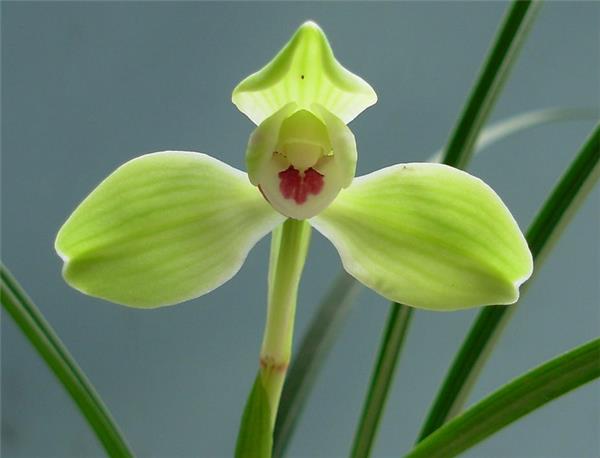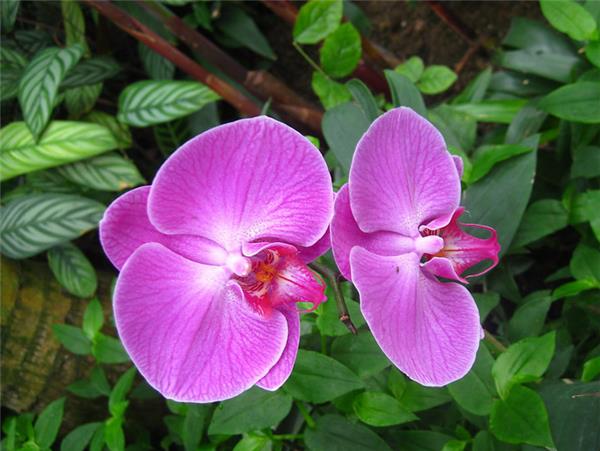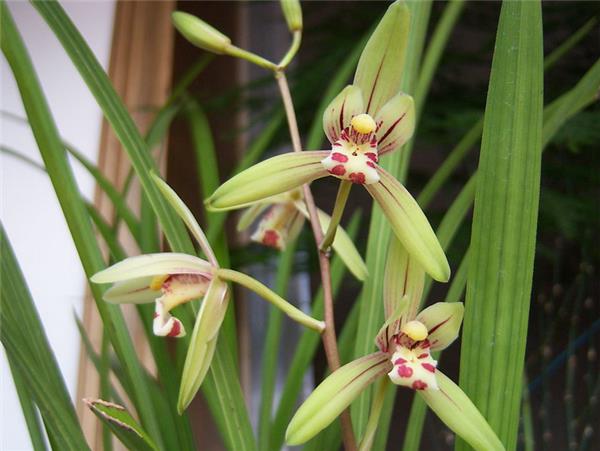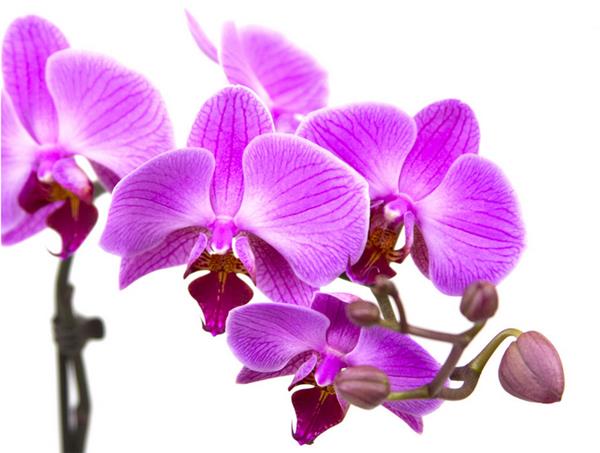Cultivation and management of orchids
Orchid is a gentleman in flowers, there is no gorgeous design and color, but pleasant aroma, but also favored by many people, let's take a look at orchid cultivation and management.

Cultivation and management of orchids
First, the propagation of orchids: at present, orchids are mainly propagated asexually, mainly in individual plants, combined with turning pots. Fish pillow orchids and construction orchids should be carried out before the Qingming Festival in March-April and before the new buds are unearthed; spring orchids and cymbidium should be carried out from September to October after autumn. After you want to select the mother plant, you can cut the orchid plant from a large gap between the false bulbs, cut it with scissors, it is better to choose the mother plant, carefully cut off the rotten roots and leaves, do not hurt the buds during pruning, wash the roots with clean water after repair, put them in a cool place, put them in a dry state, wash the flowerpot before putting on the pot, cover the bottom of the pot with a layer of brown skin and then put tiles, put coarse sand on the tile surface, and then fill the coarse mountain mud, about half a basin. Then divide the orchid plant, plant it in the basin, put the orchid root evenly, and then fill the basin around the basin with fine mud humus, slightly lower than the basin surface, and gently lift the plant up to stretch its roots and fill the rhizosphere soil with your hands. Then cover the basin with some emerald grass or moss to facilitate watering, put the basin in the shade, poem its survival, can be maintained as usual.

Second, orchid site: orchids should pay attention to ventilation and ventilation, it is best to choose a place with shelter in the southwest to avoid strong sunlight, Chunlan Huilan likes shade; generally bask in the sun for about 2 hours every morning, fish pillow orchid and Jianlan are less cold-resistant and slightly like the sun, but avoid exposure to the sun, they need to go into the orchid shed for maintenance in winter. Chunlan and Huilan can be put under the outdoor south wall as long as it is not frost and snow. All kinds of orchids must avoid rainstorm exposure, but there must be certain light, light is an effective external cause to promote the formation of flower buds, good light, more flower buds, bad light, less flower buds.
Third, pot soil: orchid planting soil, should be conducive to drainage loose, generally use mountain mud rotten leaf soil, that is, more fertile acid humus soil is appropriate, do not use alkaline soil. Pond mud is dried and hammered into broken grains, and it is also a good plant material for orchids. The ideal plant material for orchids should have good drainage and air permeability, contain sufficient nutrients, and is not easy to paste and solidify. In order to obtain ideal plant materials, you can prepare them by yourself. It is also a good plant material for orchid cultivation with mountain mud humus soil plus sawdust and a small amount of organic fertilizer.

Fourth, orchid potted plants: it is better to choose a mud pot, and the new mud basin should be soaked in clear water for several hours before planting. If you want to beautifully use purple sand pots, plastic pots, etc., you need to choose larger drainage holes and the size of the pot is suitable for flower roots to stretch in the basin.
Fifth, watering: orchids should not be wet when they are dry. As the saying goes, "dry orchids and wet chrysanthemums". It is better to use Rain Water or river water for watering, or tap water, but it must be stored for one or two days to let some harmful gases volatilize away. Watering must be done with a thin-eye sprinkler to wet the whole plant and do not pour into the basin. In summer, you must be watered sooner or later, wash the heart thoroughly, do not water half of the water, and avoid watering at noon. When watering, it mainly depends on the dry and wet condition of the basin soil. In the hot and dry season in summer, spray water should be sprayed on the ground around the flowerpot in the evening to increase air humidity.

6. Fertilization: orchids are forbidden to apply thick fertilizer, and it is not suitable to apply fertilizer in the first year of newly planted orchids. After a year of cultivation, fertilizers can not be fertilized until the new roots grow vigorously. Orchids are generally from March to May and September to 11, and the rotten and thin fertilizer water is applied every half a month. Fertilization should be stopped during the hot summer and dormant periods in midsummer. Orchid fertilizers often use bean cake, peanut wheat cake, bone meal, fish meal, etc., but they can only be used after they are rotten. Ye Yilan and Suxin orchid varieties do not like fertilizer, more fertilization, degradation and literacy. In short, it is necessary to achieve proper fertilization and timely fertilization.
7. Prevention and control of diseases and insect pests: orchids have a variety of diseases and insect pests. They are easy to produce shell insects when they are poorly ventilated and overwatered. Scale insects are the most common pests in orchids, mainly parasitic on the stems, leaves and leaves of orchids. When shell insects are found, 50% omethoate emulsion and 50% malathion can be sprayed evenly and thoughtfully, and the front and back of the leaves should be sprayed. If the pest is serious, use manual brushing. Combined with spray, the effect is better. Orchids are prone to diseases, common anthrax, the initial stage of the disease, spraying 50% carbendazim or 50% topiramate 500-600 times liquid, the effect is better.
Orchids are prone to diseases, common anthrax, the initial stage of the disease, spraying 50% carbendazim or 50% topiramate 500-600 times liquid, the effect is better.
Related
- Wuhan Hospital Iron Tree Blooming Result Was Instantly Frightened by the Gardener Master
- Which variety of camellia is the most fragrant and best? Which one do you like best?
- What is the small blue coat, the breeding methods and matters needing attention of the succulent plant
- Dormancy time and maintenance management of succulent plants during dormancy
- Minas succulent how to raise, Minas succulent plant pictures
- What are the varieties of winter succulent plants
- How to raise succulent plants in twelve rolls? let's take a look at some experience of breeding twelve rolls.
- Attention should be paid to water control for succulent plants during dormant period (winter and summer)
- Watering experience of twelve rolls of succulent plants
- Techniques for fertilizing succulent plants. An article will let you know how to fertilize succulent plants.



